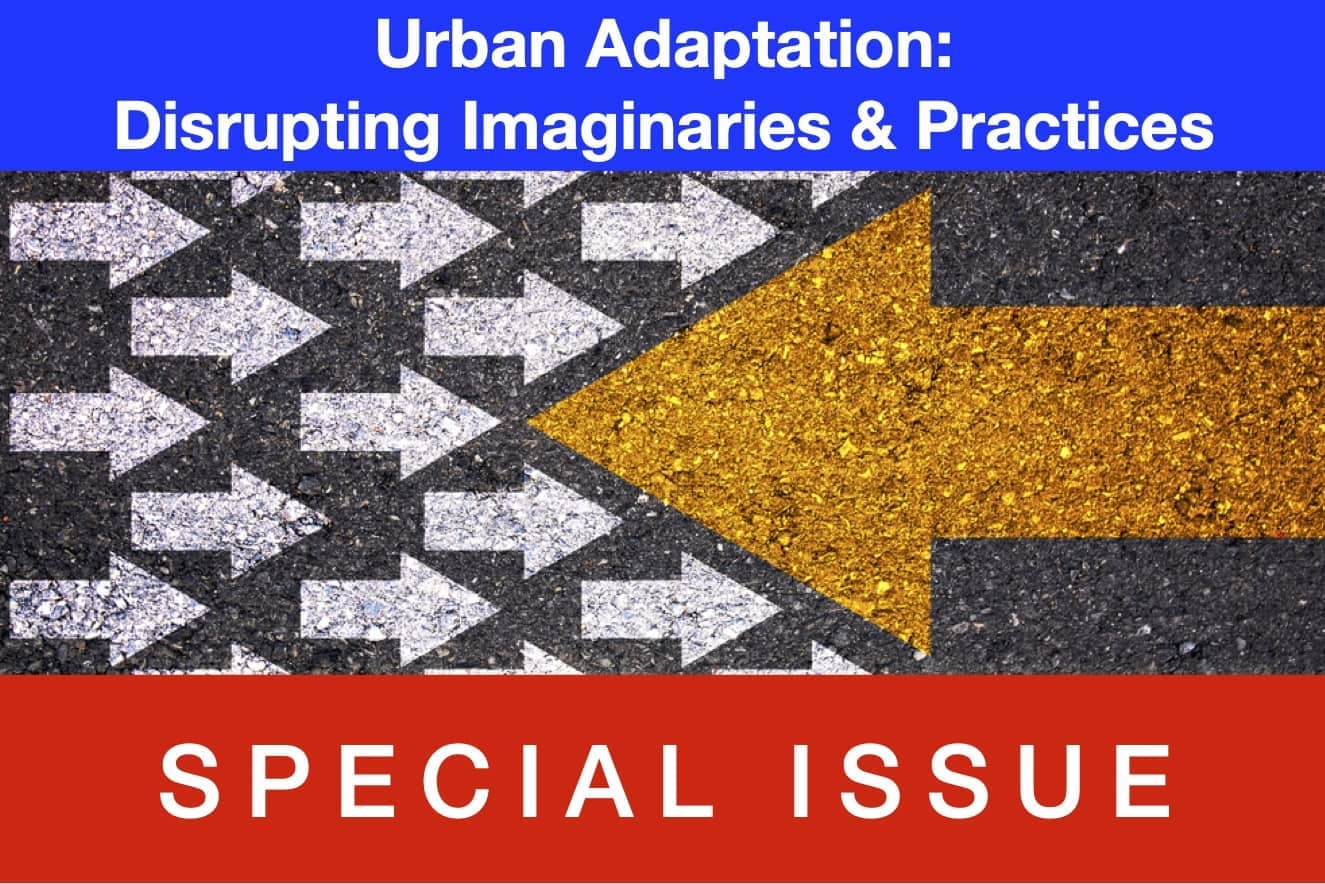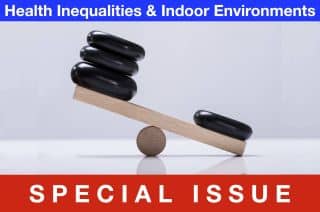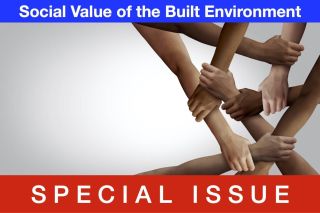
www.buildingsandcities.org/journal-content/special-issues/urban-adaptation-disrupting-imaginaries2.html
Urban Adaptation: Disrupting Imaginaries & Practices

How can we create a more pluralistic, inclusive approach to urban climate adaptation? How can ill-suited approaches be disrupted?
Current imaginaries (ways to understand and envisage how adaptation should take place) and practices need to be revised to provide social justice and reflect local needs. This special issue focuses on how inappropriate / inadequate urban adaptation imaginaries and practices can be identified and disrupted to provide more inclusive, socially just approaches to urban adaptation. Actions for urban climate adaptation (in physical, social, political, legal dimensions) are needed to break with the status quo, reduce systemic vulnerabilities and increase coping capacities (resilience) to face climate change impacts at scale.
Guest editors: Vanesa Castán Broto, Marta Olazabal & Gina Ziervogel
Urban adaptation relates to how people imagine plausible and desirable urban futures. Adaptation imaginaries refer to collective representations of how society should act and towards which goal in the context of unprecedented climate change impacts. However, the existing narratives of adaptation action tend to entrench actions that may not be beneficial in the long term and may lead to maladaptation and inequities. This is the case, for example, of flood protection barriers that displace natural barriers, such as mangroves, or water distribution networks that supply water by depleting reserves elsewhere. New adaptation imaginaries will facilitate just adaptation and enable radical changes in the relationship between humans and their environment. One step to do so is to disrupt the dominant understandings of adaptation.
This special issue demonstrates the multiple ways in which such disruption can happen. Three areas where disruption can happen are:
- in international political narratives
- the relationship between climate change and urbanisation
- the implementation of action on the ground when action encounters the realities of infrastructure and service delivery.
This special issue argues that the first step in delivering climate change adaptation is to foster new ways of imagining what adaptation is needed and how it should be delivered. This includes a process of:
- understanding the assumptions embedded in dominant imaginaries of urban adaptation
- understanding how urbanisation changes how we imagine urban areas and their resilience
- harnessing existing radical attempts to reimagine adaptation and adaptation practices
- developing examples and experiences of applying urban adaptation alternatives in policy and practices
Table of contents
Disrupting the imaginaries of urban action to deliver just adaptation [editorial]
V. Castán-Broto, M. Olazabal & G. Ziervogel
Suburban climate adaptation governance: assumptions and imaginaries affecting peripheral municipalities
L. Cerrada Morato
Normative future visioning: a critical pedagogy for transformative adaptation
T. Comelli, M. Pelling, M. Hope, J.
Ensor, M.E. Filippi, E.Y. Menteşe & J. McCloskey
How hegemonic discourses of sustainability influence urban climate action
V. Castán Broto, L. Westman &
P. Huang
Nature for resilience reconfigured: global-to-local translation of frames in Africa
K. Rochell, H. Bulkeley & H.
Runhaar
Maintaining a city against nature: climate adaptation in Beira [Mozambique]
J. Schubert
Urban shrinkage as a catalyst for transformative adaptation
L. Mabon, M. Sato & N. Mabon
Equity and justice in urban coastal adaptation planning: new evaluation framework
T. Okamoto & A. Doyon
Disrupt and unlock? The role of actors in urban adaptation path-breaking
J. Teebken
The jobs of climate adaptation
T. Denham, L. Rickards & O. Ajulo
Latest Peer-Reviewed Journal Content
Designing for pro-environmental behaviour change: the aspiration–reality gap
J Simpson & J Uttley
Lifetimes of demolished buildings in US and European cities
J Berglund-Brown, I Dobie, J Hewitt, C De Wolf & J Ochsendorf
Expanding the framework of urban living labs using grassroots methods
T Ahmed, I Delsante & L Migliavacca
Youth engagement in urban living labs: tools, methods and pedagogies
N Charalambous, C Panayi, C Mady, T Augustinčić & D Berc
Co-creating urban transformation: a stakeholder analysis for Germany’s heat transition
P Heger, C Bieber, M Hendawy & A Shooshtari
Placemaking living lab: creating resilient social and spatial infrastructures
M Dodd, N Madabhushi & R Lees
Church pipe organs: historical tuning records as indoor environmental evidence
B Bingley, A Knight & Y Xing
A framework for 1.5°C-aligned GHG budgets in architecture
G Betti, I Spaar, D Bachmann, A Jerosch-Herold, E Kühner, R Yang, K Avhad & S Sinning
Net zero retrofit of the building stock [editorial]
D Godoy-Shimizu & P Steadman
Co-learning in living labs: nurturing civic agency and resilience
A Belfield
The importance of multi-roles and code-switching in living labs
H Noller & A Tarik
Researchers’ shifting roles in living labs for knowledge co-production
C-C Dobre & G Faldi
Increasing civic resilience in urban living labs: city authorities’ roles
E Alatalo, M Laine & M Kyrönviita
Co-curation as civic practice in community engagement
Z Li, M Sunikka-Blank, R Purohit & F Samuel
Preserving buildings: emission reductions from circular economy strategies in Austria
N Alaux, V Kulmer, J Vogel & A Passer
Urban living labs: relationality between institutions and local circularity
P Palo, M Adelfio, J Lundin & E Brandão
Living labs: epistemic modelling, temporariness and land value
J Clossick, T Khonsari & U Steven
Co-creating interventions to prevent mosquito-borne disease transmission in hospitals
O Sloan Wood, E Lupenza, D M Agnello, J B Knudsen, M Msellem, K L Schiøler & F Saleh
Circularity at the neighbourhood scale: co-creative living lab lessons
J Honsa, A Versele, T Van de Kerckhove & C Piccardo
Positive energy districts and energy communities: how living labs create value
E Malakhatka, O Shafqat, A Sandoff & L Thuvander
Built environment governance and professionalism: the end of laissez-faire (again)
S Foxell
Co-creating justice in housing energy transitions through energy living labs
D Ricci, C Leiwakabessy, S van Wieringen, P de Koning & T Konstantinou
HVAC characterisation of existing Canadian buildings for decarbonisation retrofit identification
J Adebisi & J J McArthur
Simulation and the building performance gap [editorial]
M Donn
Developing criteria for effective building-sector commitments in nationally determined contributions
P Graham, K McFarlane & M Taheri
Join Our Community

The most important part of any journal is our people – readers, authors, reviewers, editorial board members and editors. You are cordially invited to join our community by joining our mailing list. We send out occasional emails about the journal – calls for papers, special issues, events and more.
We will not share your email with third parties. Read more



Latest Commentaries
COP30 Report
Matti Kuittinen (Aalto University) reflects on his experience of attending the 2025 UN Conference of the Parties in Belém, Brazil. The roadmaps and commitments failed to deliver the objectives of the 2025 Paris Agreement. However, 2 countries - Japan and Senegal - announced they are creating roadmaps to decarbonise their buildings. An international group of government ministers put housing on the agenda - specifying the need for reduced carbon and energy use along with affordability, quality and climate resilience.
Building-Related Research: New Context, New Challenges
Raymond J. Cole (University of British Columbia) reflects on the key challenges raised in the 34 commissioned essays for Buildings & Cities 5th anniversary. Not only are key research issues identified, but the consequences of changing contexts for conducting research and tailoring its influence on society are highlighted as key areas of action.